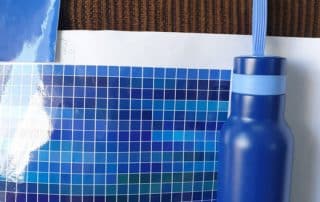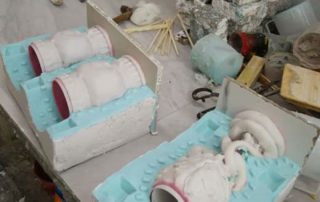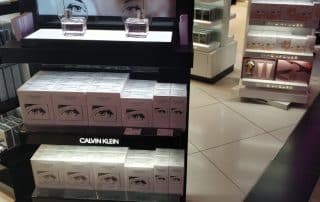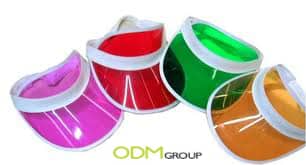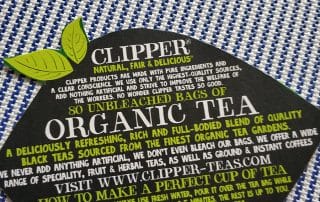What is CMF Design?
CMF stands for Colour, Material, and Finish. CMF Design is a specialty in industrial design required for complex custom promotional products.
Our team of designers may require help from both industrial and product design engineers with chromatic and tactile aspects of the product. All this will make the product on-brand and per requirement by the client.
CMF is communicated through the use of rendering and descriptive language. Also, precise communication of CMF is necessary so that mistakes and misinterpretation will not happen.
Here is an example of a CMF table we have done, explaining the different aspects of various parts of the product, which is a branded protective screen:
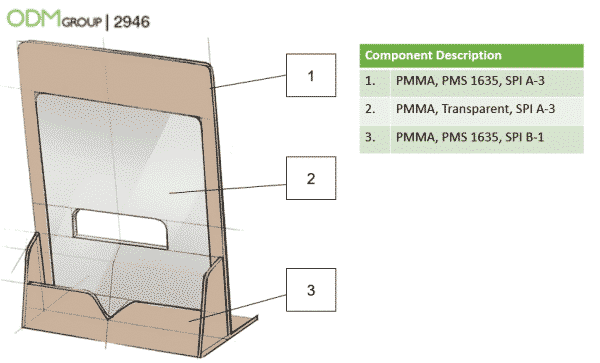
CMF Design
We will now explore the different terms of CMF Design:
Colour
To communicate the colour of the different parts, we use the Pantone Matching System (PMS). It is a universal colour language and standardised colour matching system used by both the designers and manufacturers.
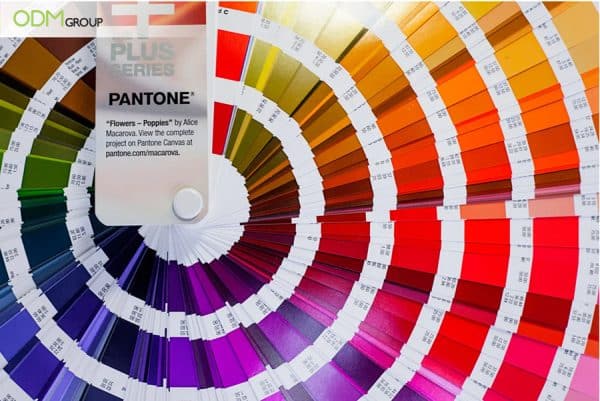
CMF Design
We totally recommend you to have a Pantone Book.
Also, another thing to look out for is the type of material of your product. Colour changes based on the material and some colour are also not achievable at all on a certain material. So remember to use the correct system! There is one for print and packaging and another for fashion and product design.
Colour Tolerances:
There may be a slight variance in colour between what we and the client want and the finished product. If the actual colour of the product does not match the standard, this can lead to customer dissatisfaction and more amount of rework, waste, and costs.
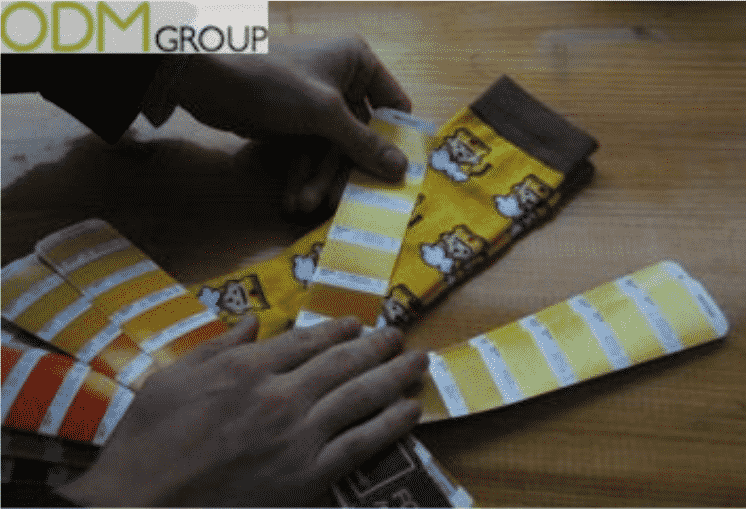
CMF Design – Colour Tolerances
Therefore, we should establish a color tolerance, which is the limit to how big the difference in color between the product sample and the standard set to be acceptable. The tolerance values should correlate to the human eye so that it is both visually and numerically acceptable.
We define colour tolerance by using a colour measuring instrument. The tolerance values should be defined by both supplier and customer.
Material
For material, it is not that complicated. You would need to specify the type of alloy(for metals) and resins (for plastic).
Some common types of plastics used in manufacturing are ABS, HPDE, PMMA(or Acrylic), PP, and PS.
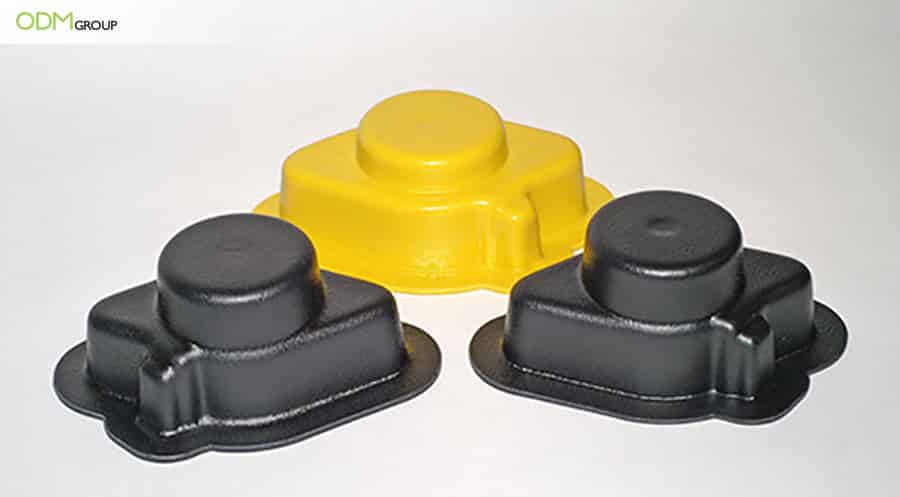
CMF Design – Material
Material Tolerances:
One tolerance is the exact measurements of the product, like the length, width, height, and thickness. All parties should set a permissible limit of variation in the physical dimension or physical and material property of the material.
Shown below is a CAD of a promotional whiskey glass. We have given a dimension tolerance of 1mm.
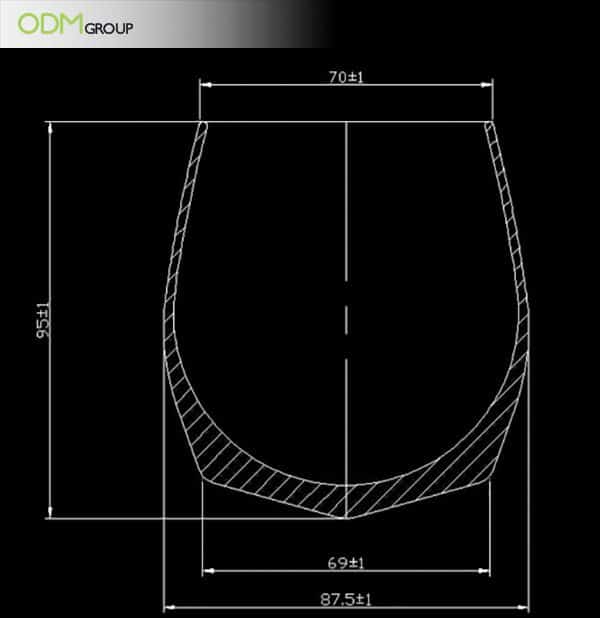
CMF Design – Material Tolerance
Finish
The designator we use for product finish is the Society of Plastic Industry (SPI) standards.
Here is a table of the types of finishes and the typical applications:
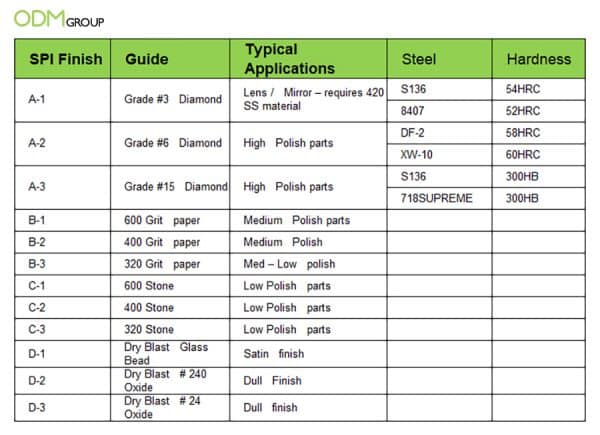
CMF Design
The types of surface finishes are achieved through different processes of finishing. A higher class surface is less rough and has a more glossy appearance. Meanwhile, a lower-class surface is rougher and has a matte appearance.
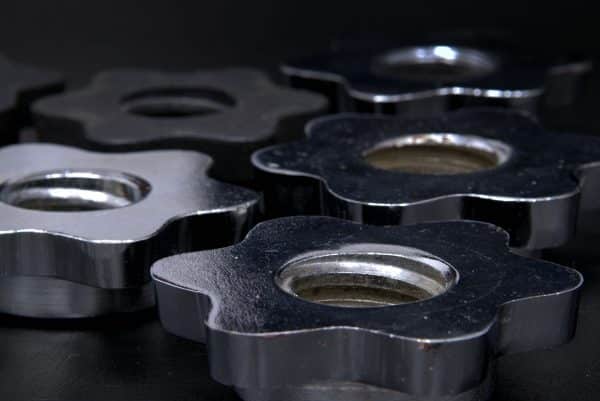
CMF Design – Surface Finish
It is important for you to make cost-effective decisions on the best surface finish and it depends on their component’s importance.
For example, if the component is visible to the customer, you should have a higher grade finish as you want it to be smoother and more glossy. Meanwhile, less important components not visible to the shopper should be given lower grade finish.
Generally, the A-Class surface finish is more polished but expensive. B-1 is the most common and no-frills surface finish and C-1 is usually for internal surfaces.
Overall, it is important to make cost-effective decisions on the type of finish.
Managing Tolerances for CMF Design:
Two Way Open Communication
Firstly, you need to have open communication between the designer and the manufacturer so that the CMF requirements are correct. You should give clear and detailed information to the supplier about the needs. In addition, the supplier should give regular updates to clarify with the client whether their needs are met. Problems can be avoided with two-way communication.
Between you and your client, you should also give them regular updates on the progress of the product. In addition, you should have many thorough discussions with them about their feedback and requirements on the product.
Quality Control
Another service that ODM offer is Quality Control. We have a team of inspectors to check that the product during sampling and mass production adheres to our set of quality criteria and the requirements of our client. This forms the basis of an efficient business that minimizes waste and operates at high levels of productivity.
We ensure that the measurements and quality, like the color and material, are consistent for all products. More importantly, this helps our clients, who are unable to be physically present at the production site, to feel assured that the accuracy and quality of the end product are not compromised.
How ODM Can Help?
Looking for custom promotional products to roll out for your next promotional campaign? Do not hesitate to contact us.
Our team is well experienced in the promotional products industry and can assist you with your product needs. No task is too complex for us. Also, our Mindsparkz team can assist you with product brainstorming and design needs.
Not looking for custom promotional merchandise? We offer other services such as Quality Control, Graphic and Web Design, and Trade Show Marketing.
Check Out Our Other Blogs As Well:
We have manufactured promotional glassware for drinks companies. Here are some tolerances to look out for with manufacturing glass products.
Read this blog on how we overcome challenges with colour printing.
We previously visited a leather supplier in Vietnam and we documented our experience there.
Our team also visited a Plastic Manufacturer in India, this was our experience there:
Aluminum bottles are a great packaging solution for cosmetics, here are some things to look out for with selecting the kind of manufacturing process:
